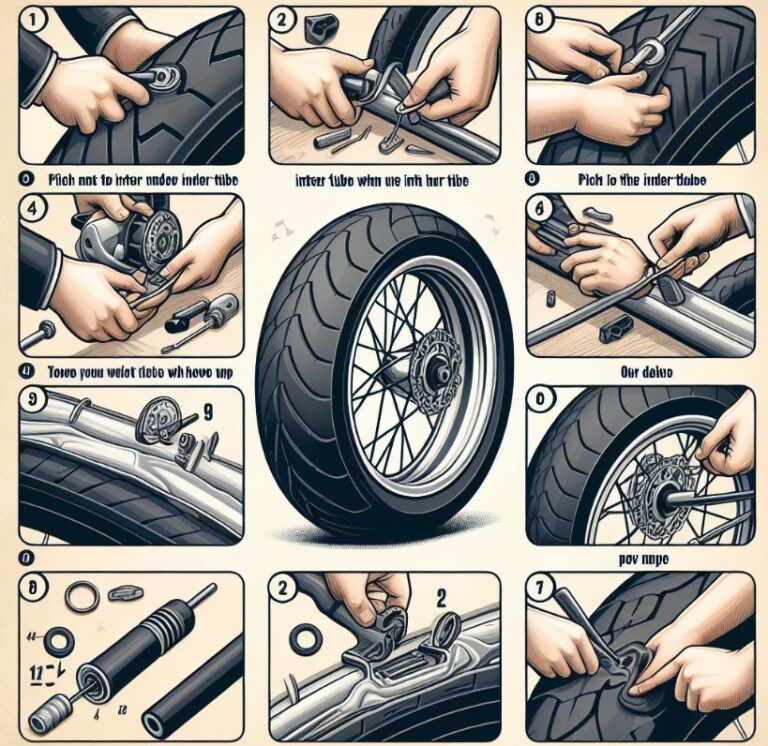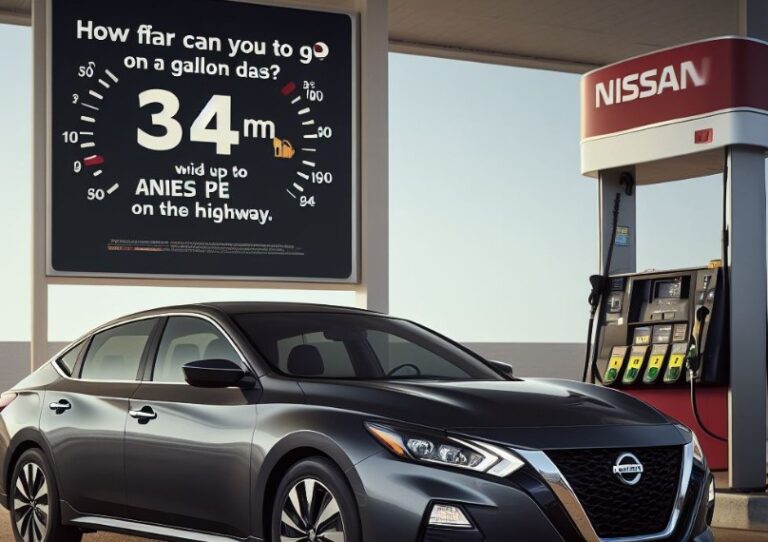Tesla automatic emergency braking model y: user Guide
What is tesla automatic emergency braking model y? The radar sensor and forward-looking camera(s) measure the distance between the Model Y and an object spotted moving in front of it.
When a frontal collision is considered unavoidable, automatic emergency braking is intended to deploy the brakes to lessen its severity.
When Automatic Emergency Braking engages the brakes, a siren and a visual warning are displayed on the touchscreen.
Additionally, you’ll notice that the brake pedal abruptly depresses.
The brake lights turn on to let other cars know you are slowing down.
If you’re traveling at 35 mph (56 km/h) or higher, the brakes are released once Automatic Emergency Braking has reduced your speed by at least 30 mph (50 km/h).
For instance, while you’re moving at 56 mph (90 km/h), automatic emergency braking engages, and when your speed lowers to 26 mph (40 km/h), it disengages.
Automatic Emergency Braking only engages when traveling between 7 mph and 90 mph (150 kph).
Tesla automatic emergency braking model y
The Model Y’s anti-lock braking system (ABS) keeps the wheels from locking when you apply the most force to the brakes. In most road conditions, this enhances steering control during hard braking.
When necessary, for emergency braking, the ABS continuously measures each tire’s speed and modifies the brake pressure per the available grip.

A pulsing sensation through the brake pedal indicates a change in braking pressure.
his shows that the ABS is working, and there is no reason to be concerned.
While feeling the pulse, apply continuous, firm pressure to the brake pedal.
Press the brake pedal down and hold it there during an emergency, even if the surface has little traction.
The ABS modifies the braking force applied to each wheel depending on the available traction.
This keeps the wheels from locking and guarantees the safest possible stopping.
To apply the brakes, press and hold the Park button on the drive stalk and reduce drive torque if a different means of stopping the car is necessary.
Brake Disc Wiping
Model Y has brake disc wiping, which keeps brakes responsive in chilly and wettish conditions.
This feature repeatedly provides negligible brake power to the brake discs to eliminate water from their surface when cold and rainy weather is recognized.
Hydraulic Fade Compensation
Hydraulic fade adjustment is included with Model Y. This makes monitoring the ABS activity and brake system pressure easier for times of poor brake performance.
You might experience a noise, Feel your foot pull away from the brake pedal, and notice a significant increase in braking if impaired brake performance is detected (for instance, due to brake fade, cold, or wet circumstances).
Put your foot on the brake as you normally would, without letting up or pushing the brakes.
Hydraulic Boost Compensation
After pressing the brake pedal, the brake booster in the Model Y activates the brakes. If the brake booster malfunctions, hydraulic boost compensation offers mechanical aid.
The brake pedal will feel harder to push, and you might hear a sound if a brake booster failure is discovered.
Apply continuous pressure to the brake pedal without releasing or pushing it to slowly stop the Model Y.
Drive. Keep a safe distance from other drivers because braking performance and pedal responsiveness may be diminished.
Regenerative Braking
Regenerative braking slows down the Model Y whenever you take your foot off the accelerator while driving and sends any extra power back to the Battery.
Regenerative braking can extend a vehicle’s range by anticipating stops and lowering or eliminating accelerator pedal input to slow down.
Depending on the Battery’s current condition, regenerative braking may cause a vehicle to decelerate differently.
For instance, regenerative braking may be restricted if the Battery is cold or has already had a full charge.
Real-time power usage is shown on the power meter, a thin horizontal line positioned at the top of the touchscreen’s car status area:
- The power created through regenerative braking, or the power utilized to decelerate the vehicle, is shown on the left side of the power meter. Green indicates power being returned to the Battery, while gray indicates power utilized by the conventional braking system.
- The power meter on the right side displays the Battery’s power output, such as the power utilized to accelerate the car or cool the interior. The power meter fills to the right with black when the accelerator is depressed (or white if the display is dark).
Stopping Mode
Every time you let off the gas pedal while driving, regenerative braking slows down the Model Y.
Once the vehicle is moving at a very low speed—nearly at a stop—and the brake and accelerator pedals have been disengaged, you can decide what you want Model Y to perform.
Select one of these options when the vehicle is in the Park by touching Controls > Pedals & Steering > Stopping Mode:
Creep: Similar to a normal car with an automatic transmission, the motor applies torque when the vehicle approaches or reaches a complete stop, slowly propelling the Model Y forward (in Drive) or backward (in Reverse).
You might need to depress the accelerator pedal in some circumstances, such as on a steep hill or driveway, to keep moving or stop the Model Y from turning in the opposite direction.
Hold: The range is increased by providing regenerative braking at speeds slower than with the Creep and Roll settings, and brake wear is decreased.
Model Y’s brakes automatically apply as it comes to a halt, negating your need to use the brake pedal.
Vehicle Hold maintains the brake pressed whether the car is stopped on a hill or a flat surface as long as your foot doesn’t touch the brake or accelerator pedals. Refer to Vehicle Hold.
Roll: When approaching or coming to a complete halt, the Model Y starts to roll freely like a car in neutral. Model Y will, therefore, roll downward if stopped on an inclined surface.
Until the accelerator pedal is depressed, neither the brake nor the motor apply torque.
Parking Brake
Tap Controls > Safety > Parking Brake to apply the parking brake. Obey the directions displayed on the screen.
You can also apply the parking brake by pressing and holding the button at the end of the driving stalk while the vehicle is in parking.
To manually release the parking brake and put the Model Y into Neutral, use the touchscreen:
- Safety > Touch Controls.
- Step on the parking brake after depressing the brake pedal. Model Y changes to Neutral if it was previously in the Park.
Brake Wear:
Brake Pad Wear The brake pads on the Model Y come with wear indicators.
A tiny metal strip that is fastened to the brake pad and makes a squeaking sound as it brushes against the rotor serves as a wear indication.
This screaming sound indicates that the brake pads must be replaced since they have reached the end of their useful life. Contact Tesla Service to get the brake pads replaced.
Taking off the tire and wheel means brakes must be visually inspected regularly. See Subsystems for complete specifications and service restrictions for brake pads and rotors.
Additionally, if you live where the roads are salted throughout the winter, Tesla advises cleaning and lubricating the brake calipers once a year or every 20,000 kilometers.
How Tesla is Advancing AEB?
The Automatic Emergency Braking system upgrades made by Tesla go above and beyond the basic AEB capabilities, adding the capacity to recognize and respond to vehicles that obstruct the car’s route or “steal the right of way,” such as a car that runs a red light or cuts the Tesla off.
With this newly enlarged technology, roughly half of these crashes would be prevented, according to Tesla.
According to Tesla, while the most recent upgrade has yet to be made available to the general public, there have already been numerous instances of Teslas responding to cars that turn in front of them or veer to the side.
AEB History
Since the middle of the 2000s, automatic emergency braking has been an increasingly popular safety feature in newer cars.
AEB is also referred to by various names, including Active Brake Assist on Mercedes-Benz automobiles and Collision Mitigation Braking System (CMBS) on Honda vehicles. Among the early leaders in the field were Bosch and Volvo.
In 2006, Bosch unveiled its Predictive Safety System; in 2008, Volvo unveiled its City Safety System.
Since then, numerous additional automakers and technology firms have incorporated a wide range of sensors, algorithms, and machine learning approaches into the development of AEB systems by enhancing the precision and efficiency of the technology.
Conclusion
The upgrades to tesla model y automatic emergency braking will be available to some people first because FSD Beta is still on a different track from Tesla’s other updates.
We anticipate that Tesla will soon bring this capability to non-FSD Beta builds or combine FSD and non-FSD builds so that all owners can use the upgraded Automatic Emergency Braking.
This is because Tesla has a history of implementing safety features.
Frequently Asked Questions
How is the emergency brake activated?
Completely depress the brake pedal. Use the parking brake, pull the lever, depress the pedal, or depress the button (your owner’s handbook will detail how to do this for your vehicle). Put your manual transmission in gear or the “Park” position on your automatic transmission. Push the brake pedal back.
How do you do automatic emergency braking?
Depending on the system’s design, automatic emergency braking may use cameras, radar, or other sensors. These technologies automatically engage the braking system when they anticipate a collision with an item in your path.
Do all Teslas have emergency braking?
Since the IIHS includes active safety technologies in its safety ratings, new cars produced today frequently include them. Examples include lane-keeping assistance and automatic emergency braking. Since September 2014, Active Safety Features have been included on all Tesla vehicles.

Welcome to the exhilarating world of Matt Rex, a professional car racer turned renowned vehicle enthusiast. Immerse yourself in his captivating blog as he shares heart-pounding adventures, expert reviews, and valuable insights on cars, trucks, jets, and more. Fuel your passion for speed and discover the beauty of vehicles through Matt’s engaging stories and meticulous expertise. Join the ever-growing community of enthusiasts who find inspiration and expert advice in Matt Rex’s blog—a digital hub where the thrill of speed meets the pursuit of knowledge.


![My Car Started Smoking And Then Died [Causes & How Fix It?]](https://www.turbochaos.com/wp-content/uploads/2023/06/My-Car-Started-Smoking-And-Then-Died-768x512.jpg)
![Tesla Model 3 Rear Bumper Replacement [Guide For Model S,3,X,Y]](https://www.turbochaos.com/wp-content/uploads/2023/08/Tesla-Model-3-Rear-Bumper-Replacement.jpg)


![Car Won’t Start After Jumping Another Car [Reasons + Solution]](https://www.turbochaos.com/wp-content/uploads/2023/05/Car-Wont-Start-After-Jumping-Another-Car-768x512.jpg)
